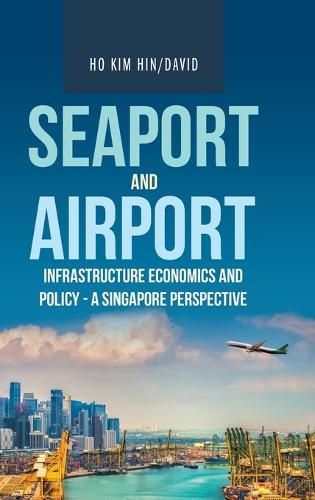Readings Newsletter
Become a Readings Member to make your shopping experience even easier.
Sign in or sign up for free!
You’re not far away from qualifying for FREE standard shipping within Australia
You’ve qualified for FREE standard shipping within Australia
The cart is loading…






This title is printed to order. This book may have been self-published. If so, we cannot guarantee the quality of the content. In the main most books will have gone through the editing process however some may not. We therefore suggest that you be aware of this before ordering this book. If in doubt check either the author or publisher’s details as we are unable to accept any returns unless they are faulty. Please contact us if you have any questions.
This book looks closely at the findings, contributions and recommendations on key issues concerning the concomitant subjects of the large and complex physical infrastructural provision like the seaport and the airport. Chapter 1 examines the seaports, where ships, cargoes, cranes, forklifts and storage yards, warehouses, lorries, roads and rail lines abound. Cargo handling needs specialist knowledge of the understanding supply chain management (SCM), and of the global integrated logistics hub, i.e. global gateway. Chapter 2 highlights that the growth of developing countries depends on adequate physical infrastructure to support economic development. The Chapter examines the merits of viable seaport infrastructure investment, of requiring large capital expenditure, long payback period and of structuring a defensible risk management strategy to deal with uncertainties. Singapore’s Jurong Port is the case study. Chapter 3 is concerned with the growth of developing countries ., which depends very much on having adequate physical infrastructure to support economic development. As a strategic response, many physical infrastructure investments like seaports are being privatised and highly purpose built. Merits of the viable, long term, seaport investment, and of structuring a defensible risk management strategy are essential to deal with uncertainties. Singapore’s Jurong Port is the case study. Chapter 4 is concerned with the global outreach of the small island state of Singapore’s seaport operation, owing to its chronic and limited land and small population size. To overcome limiting growth prospects, it is essential to grow and sustain the global outreach of the Port of Singapore. Last but not least, Chapter 5 recognizes that for public physical infrastructure developments like Singapore’s global Changi Airport, public funding is also a form of investment that entails uncertainties, which need to be rigorously evaluated with financial modelling on the risks and returns. Even more so for crucial seaport expansion and for developing a larger strategic objective for the long-term, well-being of the nation. Changi Airport is a key pillar of strength to support the growth of Singapore’s trade-oriented market economy.
$9.00 standard shipping within Australia
FREE standard shipping within Australia for orders over $100.00
Express & International shipping calculated at checkout
This title is printed to order. This book may have been self-published. If so, we cannot guarantee the quality of the content. In the main most books will have gone through the editing process however some may not. We therefore suggest that you be aware of this before ordering this book. If in doubt check either the author or publisher’s details as we are unable to accept any returns unless they are faulty. Please contact us if you have any questions.
This book looks closely at the findings, contributions and recommendations on key issues concerning the concomitant subjects of the large and complex physical infrastructural provision like the seaport and the airport. Chapter 1 examines the seaports, where ships, cargoes, cranes, forklifts and storage yards, warehouses, lorries, roads and rail lines abound. Cargo handling needs specialist knowledge of the understanding supply chain management (SCM), and of the global integrated logistics hub, i.e. global gateway. Chapter 2 highlights that the growth of developing countries depends on adequate physical infrastructure to support economic development. The Chapter examines the merits of viable seaport infrastructure investment, of requiring large capital expenditure, long payback period and of structuring a defensible risk management strategy to deal with uncertainties. Singapore’s Jurong Port is the case study. Chapter 3 is concerned with the growth of developing countries ., which depends very much on having adequate physical infrastructure to support economic development. As a strategic response, many physical infrastructure investments like seaports are being privatised and highly purpose built. Merits of the viable, long term, seaport investment, and of structuring a defensible risk management strategy are essential to deal with uncertainties. Singapore’s Jurong Port is the case study. Chapter 4 is concerned with the global outreach of the small island state of Singapore’s seaport operation, owing to its chronic and limited land and small population size. To overcome limiting growth prospects, it is essential to grow and sustain the global outreach of the Port of Singapore. Last but not least, Chapter 5 recognizes that for public physical infrastructure developments like Singapore’s global Changi Airport, public funding is also a form of investment that entails uncertainties, which need to be rigorously evaluated with financial modelling on the risks and returns. Even more so for crucial seaport expansion and for developing a larger strategic objective for the long-term, well-being of the nation. Changi Airport is a key pillar of strength to support the growth of Singapore’s trade-oriented market economy.